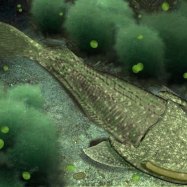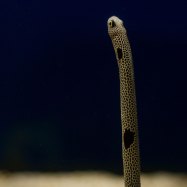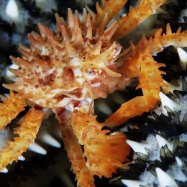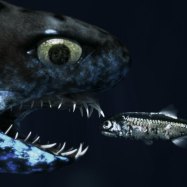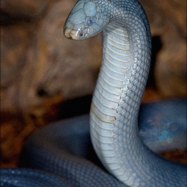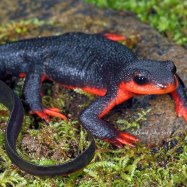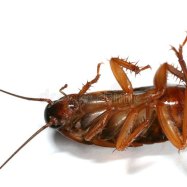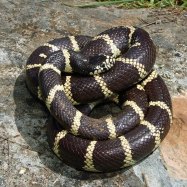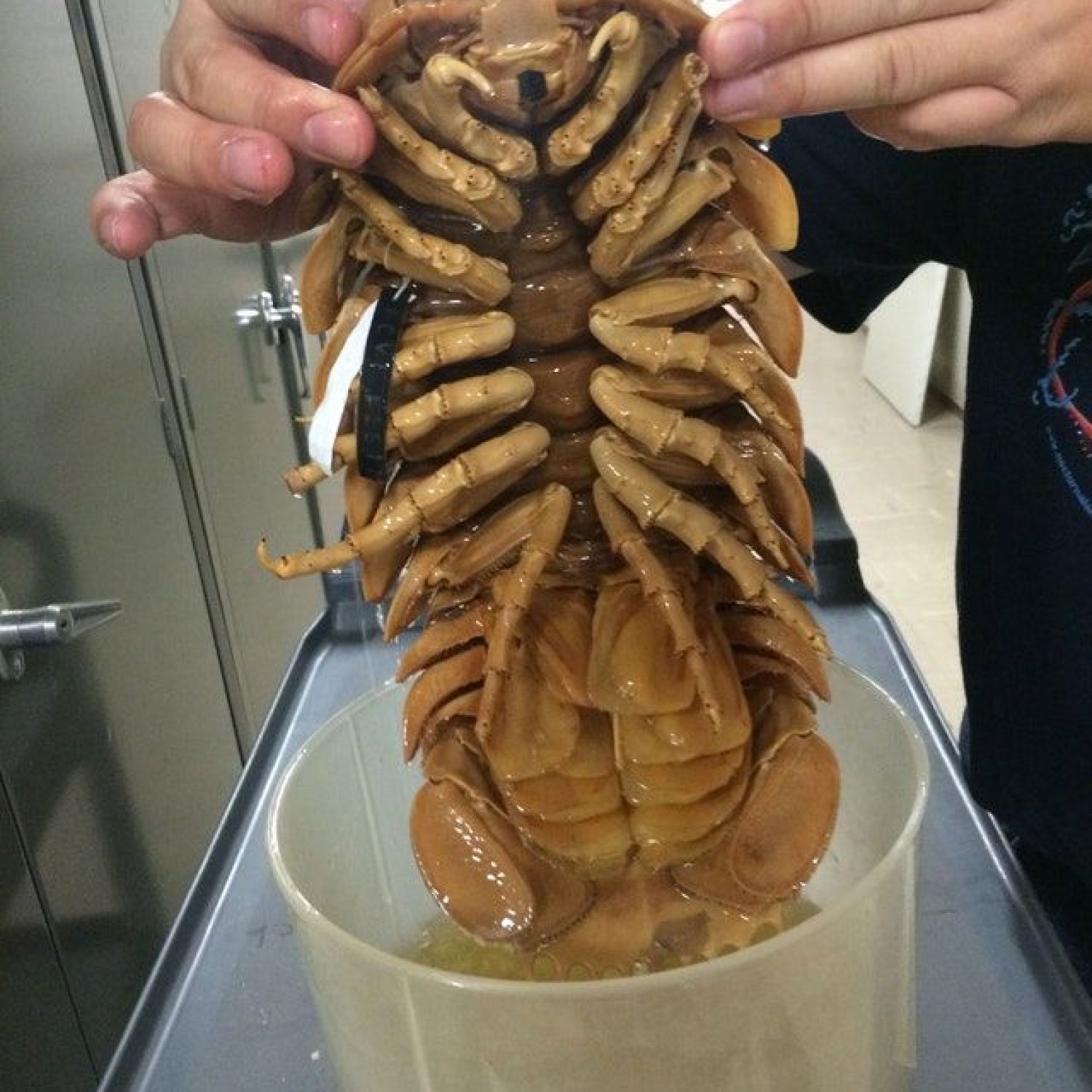
Giant Isopod
Up to 14 inches (36 cm)
Did you know about the giant isopod? This fascinating creature can grow up to 14 inches and is found off the coast of North America. Belonging to the Bathynomidae family, its flattened and elongated body shape helps it thrive in the deep sea. Have you ever seen one? They are truly a wonder of the ocean! #giantisopod #deepsea #oceanwonders
Animal Details Summary:
Common Name: Giant Isopod
Kingdom: Animalia
Habitat: Deep sea
The Fascinating Giant Isopod: A Deep Sea Scavenger
The deep sea is a world that is still largely unexplored and mysterious. Its depths hold countless unknown creatures, one of which is the Giant Isopod. With its scientific name Bathynomus giganteus, this creature is also commonly known as the Giant Isopod and belongs to the kingdom Animalia.The Discovery of the Giant Isopod
The first giant isopod was discovered in 1879 by a British vessel that was exploring the deep Atlantic waters Giant Isopod. However, it was not until 1882 that the first specimen was collected and studied. Since then, more than 20 species of giant isopods have been identified, all of which belong to the family Bathynomidae.
The World of Giant Isopods
Giant isopods are crustaceans and belong to the phylum Arthropoda, making them relatives of crabs and shrimps. They are also part of the class Malacostraca, which includes other known crustaceans such as lobsters and krill. Giant isopods are classified under the order Isopoda, which means 'equal foot' in Greek, as all their legs are alike and show no specialization. They are typically found in the Atlantic Ocean, off the coast of North America and can be found as deep as 7,020 feet (2,140 meters) below sea level.
The Habitat of Giant Isopods
Being deep sea dwellers, giant isopods live in complete darkness, where they have adapted to survive under immense pressure and low temperatures. They are typically found in the muddy and rocky bottoms of the ocean, where they scavenge for food. Due to their deep-sea habitat and hard-to-reach depths, much of their behavior and biology remain unknown Giant House Spider.
Feeding Habits of Giant Isopods
Unlike most crustaceans, giant isopods do not have specialized mouthparts for feeding. Instead, they are scavengers, feeding on whatever organic matter they can find on the ocean floor. Due to the limited food resources in the deep sea, giant isopods have the ability to go for long periods without eating. Studies have shown that they can survive for up to five years without any food at all.
The Elusive Giant Isopod
Despite being fascinating creatures, giant isopods are elusive and difficult to spot. They are highly sensitive to light and can detect even the slightest movements, making it challenging to capture them in their natural habitat. It is believed that they hide in the mud or under rocks, only coming out to feed on the occasional carcasses that sink to the ocean floor.
The Appearance of Giant Isopods
The giant isopod has a flattened and elongated body with a hard exoskeleton, typical of most crustaceans. They have seven pairs of legs, which they use for crawling and swimming when needed. The rear segments of their legs also have gills, which allow them to breathe underwater. They have a distinct shield-shaped head with large antennae and small, compound eyes.
The Coloration of Giant Isopods
Giant isopods have dark brown coloration, which makes them well-camouflaged in the murky waters of the deep sea. This coloration also helps them blend in with the sediments of the ocean floor, keeping them hidden from predators.
The Size of Giant Isopods
As their name suggests, giant isopods are quite large in size compared to other isopods, growing up to a whopping 14 inches (36 cm) in length. This makes them one of the largest isopod species in existence. However, size can vary, with some specimens reaching only 2.5 inches (6.4 cm) in length.
The Role of Giant Isopods in the Deep Sea Ecosystem
Giant isopods play a crucial role in the deep sea ecosystem. Being scavengers, they contribute to the decomposition of dead matter on the ocean floor, which in turn provides essential nutrients to the deep-sea creatures. They also serve as an important food source for other deep-sea creatures, such as hagfish and octopuses.
Threats to Giant Isopods
Giant isopods are not directly targeted by humans for consumption. However, their deep-sea habitat is increasingly under threat due to human activities such as deep-sea mining and oil drilling. These activities can cause damage to the ocean floor, including the sediments in which giant isopods live. As a result, their populations may decline, affecting the balance of the deep-sea ecosystem.
Conclusion
In the vast and mysterious world of the deep sea, the giant isopod stands out as a fascinating and elusive creature. With its flat, elongated body, dark brown coloration, and scavenging feeding habits, it is truly one of a kind. As we continue to learn more about the deep sea and its inhabitants, we must also work towards protecting and preserving this fragile ecosystem, including these fascinating creatures that call it home.

Giant Isopod
Animal Details Giant Isopod - Scientific Name: Bathynomus giganteus
- Category: Animals G
- Scientific Name: Bathynomus giganteus
- Common Name: Giant Isopod
- Kingdom: Animalia
- Phylum: Arthropoda
- Class: Malacostraca
- Order: Isopoda
- Family: Bathynomidae
- Habitat: Deep sea
- Feeding Method: Scavenger
- Geographical Distribution: Atlantic Ocean
- Country of Origin: United States
- Location: Off the coast of North America
- Animal Coloration: Dark brown
- Body Shape: Flattened and elongated
- Length: Up to 14 inches (36 cm)
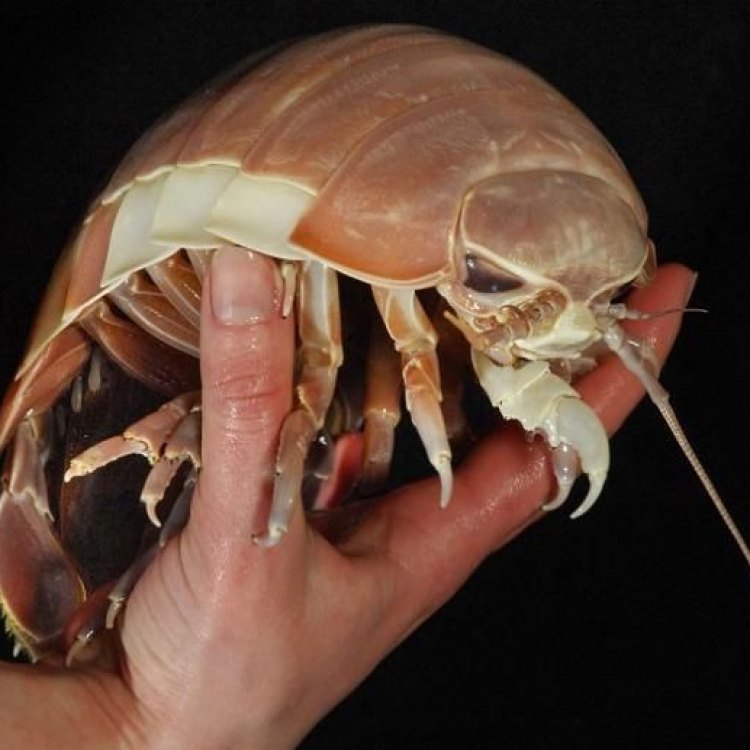
Giant Isopod
- Adult Size: Up to 14 inches (36 cm)
- Average Lifespan: Up to 5 years
- Reproduction: Sexual
- Reproductive Behavior: Egg laying
- Sound or Call: None
- Migration Pattern: Non-migratory
- Social Groups: Solitary
- Behavior: Slow-moving and inactive
- Threats: Habitat destruction, pollution
- Conservation Status: Least Concern
- Impact on Ecosystem: Important scavengers in deep-sea ecosystems
- Human Use: Not used directly by humans
- Distinctive Features: Flattened body, large size
- Interesting Facts: Giant isopods can go without food for long periods of time.
- Predator: None
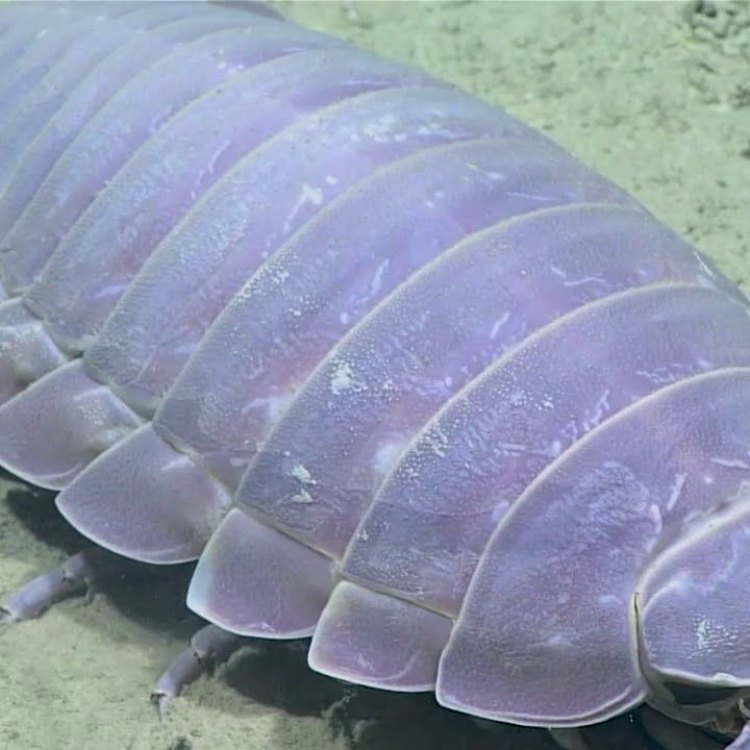
Bathynomus giganteus
The Fascinating World of Giant Isopods: From Solitary Creatures to Vital Scavengers
When we think of marine creatures, we often picture colorful and graceful fish, mesmerizing jellyfish, or majestic whales. Rarely do we consider the creatures lurking in the depths of the ocean, hidden from plain sight. One such creature is the Giant Isopod, a fascinating and unique species that deserves our attention. Known for its large size and slow-moving behavior, this creature may seem unassuming PeaceOfAnimals.Com. However, a closer look reveals a world of interesting features and behaviors that make it a vital part of the deep-sea ecosystem.Meet the Giant Isopod
The Giant Isopod, scientifically known as Bathynomus giganteus, is a crustacean belonging to the same family as common terrestrial isopods, or woodlice. However, this species is much larger and lives exclusively in deep-sea environments, typically at depths of 550 to 7,020 feet (167 to 2,140 meters).With an adult size of up to 14 inches (36 cm), the Giant Isopod is one of the largest crustaceans in the world. It has a distinctively flattened body, almost resembling a pancake, and a hard exoskeleton that protects it from its harsh environment. It also has seven pairs of legs, with the first two being significantly larger than the rest. These legs are used for walking and scavenging, making the Giant Isopod a slow-moving and inactive creature.
A Life of Solitude
Unlike many other marine creatures, Giant Isopods are solitary animals, preferring to live alone rather than in groups or colonies. This behavior is a result of their habitat, as they live in the deep-sea, where resources are scarce and competition is high Great Crested Flycatcher. Their slow-moving nature also does not lend itself to social interactions, making solitary living a more feasible option.Another factor contributing to their solitary life is their long lifespan. Giant Isopods can live up to 5 years, which is significant for an animal of its size. This long lifespan may also explain their solitary behavior, as they do not need to reproduce as frequently as other marine creatures.
The Reproductive Process of Giant Isopods
As with most crustaceans, Giant Isopods reproduce sexually. Interestingly, their reproductive organs are located on the underside of their thorax (upper body), unlike most other crustaceans where they are found on the abdomen. Mating typically occurs between a male and a female Giant Isopod, with the male latching onto the female's thorax using specialized appendages.After fertilization, the female will lay eggs, which she keeps beneath her body until they hatch. The number of eggs laid can range from 10 to 30, depending on the size of the female. The eggs take four to nine months to hatch, and the young isopods will remain with their mother for some time before venturing off on their own.
Surviving the Harsh Deep-Sea Environment
Life in the deep sea is not easy, and Giant Isopods have developed some interesting behaviors and adaptations to survive. One of the most remarkable features of these creatures is their ability to go long periods without food. This is because they are scavengers, feeding on the remains of dead animals that sink to the ocean floor. As food sources are scarce in the deep sea, Giant Isopods have evolved to go without food for weeks or even months.Another adaptation is their slow metabolism, which allows them to conserve energy and survive in low-oxygen conditions. They also have the ability to reduce their metabolism significantly in times of food scarcity, allowing them to survive for longer periods without food.
The Importance of Giant Isopods in Ecosystems
Despite their unassuming appearance, Giant Isopods play a crucial role in deep-sea ecosystems. As scavengers, they help to clean the ocean floor of decaying matter, preventing the build-up of harmful bacteria. This role makes them essential in maintaining the health of the deep-sea ecosystem and its inhabitants.In addition to their scavenging role, the slow-moving nature of Giant Isopods also makes them an important source of food for other deep-sea creatures. Some species of deep-sea fish and octopuses are known to prey on Giant Isopods, making them a vital part of the food chain in these environments.
Threats Facing Giant Isopods
Like many other deep-sea creatures, Giant Isopods face a range of threats, primarily caused by human activities. Habitat destruction, primarily from deep-sea mining and oil exploration, is a significant concern for these creatures. As they live exclusively in the deep sea, any disturbance to their habitat can have devastating consequences.Pollution is another major threat to Giant Isopods. As deep-sea ecosystems are often out of sight and out of mind, they are often used as dumping grounds for waste and chemicals. This pollution not only affects Giant Isopods but also the entire deep-sea ecosystem they are a part of.
The Conservation Status of Giant Isopods
Despite these threats, Giant Isopods are currently classified as "Least Concern" by the International Union for Conservation of Nature (IUCN). This status means that their population is stable and not at risk of extinction in the near future. However, this does not mean that we should neglect their conservation needs. As with all creatures, it is essential to monitor their population and protect their habitat to ensure their survival in the long run.The Human Use of Giant Isopods
Unlike many other marine creatures, Giant Isopods have little direct interaction with humans. They are not used for food or any other purposes, and there is currently no commercial fishing for these creatures. However, they have become popular attractions in many deep-sea aquariums around the world, giving people the opportunity to see these unique creatures up close.Curious and Fun Facts about Giant Isopods
There are many little-known facts about Giant Isopods that make them even more intriguing. For example, did you know that Giant Isopods are the only known members of their genus, Bathynomus? They are also one of the deepest living isopods, with some specimens found at depths of up to 7,020 feet (2140 meters)!Another fascinating fact about Giant Isopods is that they are one of the few deep-sea creatures that have been observed eating in captivity. In one study, it was found that a Giant Isopod went without food for over four years before finally eating a dead squid. This ability to survive extended periods without food is truly remarkable.
A World Worth Exploring
The world beneath the surface of the ocean is vast and largely unexplored. Creatures like the Giant Isopod remind us of this fact and spark our curiosity to learn more about these hidden parts of our planet. Through continued research and conservation efforts, we can uncover the mysteries of the deep sea and ensure the survival of these amazing creatures and the ecosystems they are a part of. So, next time you see a Giant Isopod, remember the unique features and behaviors that make this solitary creature an important part of our ocean's rich diversity.
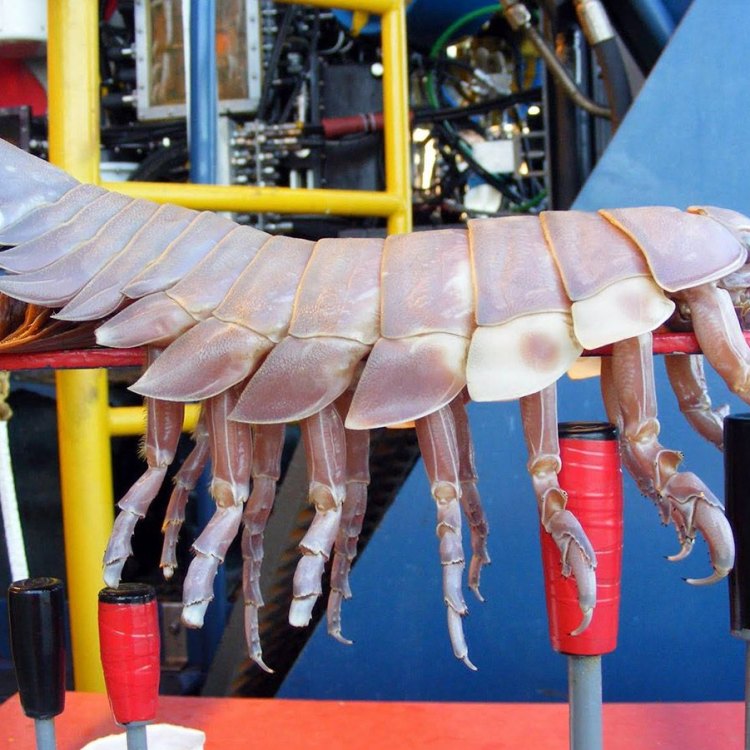
The Fascinating Giant Isopod: A Deep Sea Scavenger
Disclaimer: The content provided is for informational purposes only. We cannot guarantee the accuracy of the information on this page 100%. All information provided here may change without prior notice.

